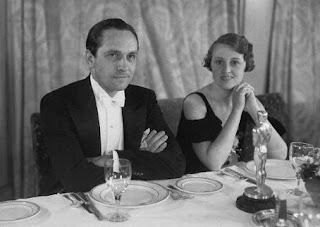
Jim Brown, a football star turned actor, is the lead in ...tick...tick...tick (1970), a drama about racial relations in a small town in Mississippi. The film is similar in some ways to, In the Heat of the Night (1967), starring Sidney Poitier and Rod Steiger, but lacks the depth and punch of that earlier film.
The story is set in the American South, but the movie was actually filmed in the small Northern California town of Colusa. Here are some of the Colusa, California filming locations.
Click images to enlarge.
Colusa Police Department, 260 6th Street
260 6th Street, Colusa, California
Above is the Colusa Police Department building located at 260 Sixth St which also is used as a police department in the film. In the screenshot we see actor George Kennedy approaching the stairs of the police department. Although the building is still used as a police department today, it was originally built as a Carnegie library in 1906. It was one of 13 Carnegie libraries built in the Sacramento Valley during 1903-17.
Below are two views looking up the street from the police department building. The first view is looking towards 210 Sixth St. and the second is looking at the lot next door to the police department.
210 6th Street, Colusa, Ca.
210 6th Street, Colusa, Ca.
The parking lot next to Colusa Police Department.
The parking lot next to Colusa Police Department.
George Kennedy, one of the police officers, lives in a home located at what is now 659 Jay Street in Colusa, California. The below views show comparisons of the homes across the street at 644 Jay Street, the home at what is now 659 Jay Street, and the home next door. The property next door to Kennedy's house has since been razed and replaced by a new building.
George Kennedy with 644 Jay Street in background.
644 Jay Street, Colusa, Ca.
George Kennedy's home at what is now 659 Jay Street.
659 Jay Street, now the site of Steidlmayer Leo Law Office.
The property next door to the Kennedy house.
The property next door to the Kennedy house appears to have been replaced by an apartment building.
Below, is a comparison of the First Christian Church located at 725 Jay Street, just up the street from Kennedy's home.
First Christian Church, 725 Jay Street
First Christian Church, 725 Jay Street
Jay Street at 7th Street
Jay Street at 7th Street
Below is a view of actor Fredric March with the Colusa Hall of Records building located in the background, just across the street from the Colusa Police Department.
Hall of Records in background from Colusa Police Department.
Hall of Records building across from Colusa Police Department.
Looking towards the Federal Land Bank Association, Jay Street at 6th Street
Looking towards the Federal Land Bank Association, Jay Street at 6th Street
Market Street at 5th Street
Market Street at 5th Street
Jim Brown walks along 6th Street at Market Street.
6th Street at Market Street.
The finale of the film takes place on a bridge leading out of town. I believe the location is the River Road bridge near B Street.
River Road bridge near B Street.
River Road near B Street.
...tick...tick...tick also stars George Kennedy and Fredric March. It was directed by James Lee Barrett. The film is available on DVD through the Warner Archive Collection.









































